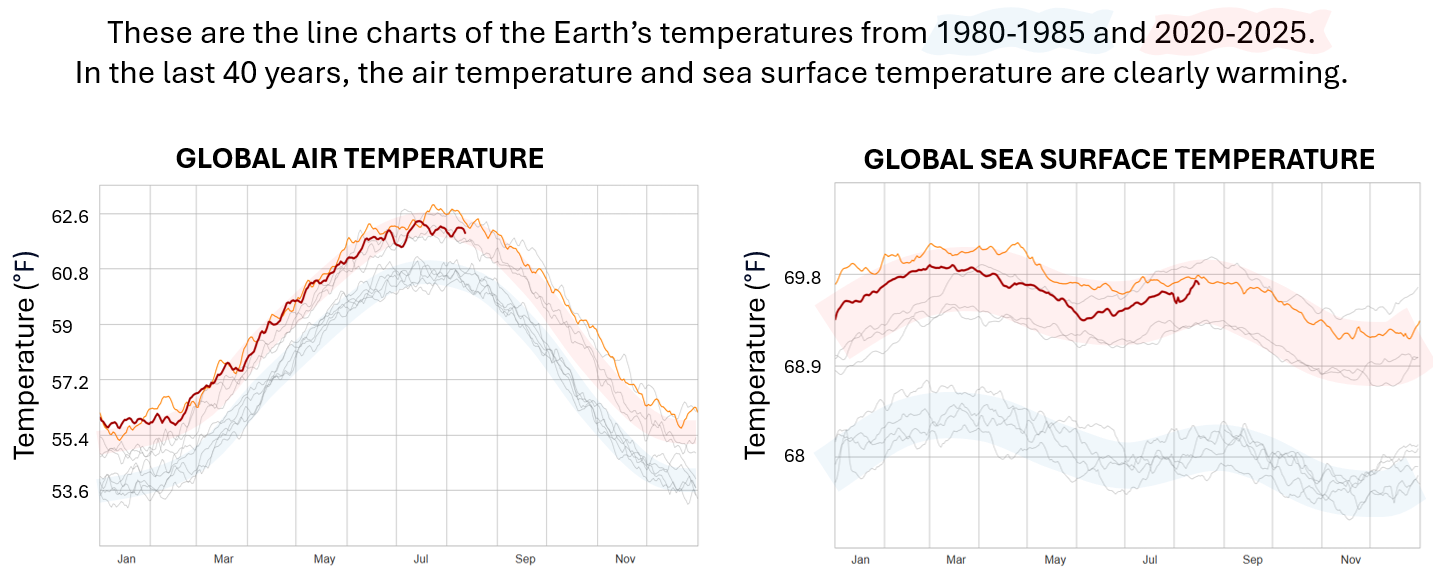Why join the
#FireflyCoalition?
All of us rely on fossil fuels in daily life, but each of us can commit to using less to protect our future.
The science is straightforward: burning fossil fuels releases carbon dioxide, carbon dioxide traps heat, and the Earth is warming.
While the climate is a complex system with many factors, the evidence is clear. By releasing more heat-absorbing gas, the atmosphere absorbs more heat. By joining together, we acknowledge this reality and take meaningful steps to reduce our impact.
The science is straightforward: burning fossil fuels releases carbon dioxide, carbon dioxide traps heat, and the Earth is warming.
While the climate is a complex system with many factors, the evidence is clear. By releasing more heat-absorbing gas, the atmosphere absorbs more heat. By joining together, we acknowledge this reality and take meaningful steps to reduce our impact.

Climate Reanalyzer (n.d.). "Daily Surface Air Temperature" & "Daily Sea Surface Temperature". Climate Change Institute, University of Maine. Retrieved August 15, 2025, from https://climatereanalyzer.org/
Thank you for helping light the way.
Sorry, that didn't work. Please try again!